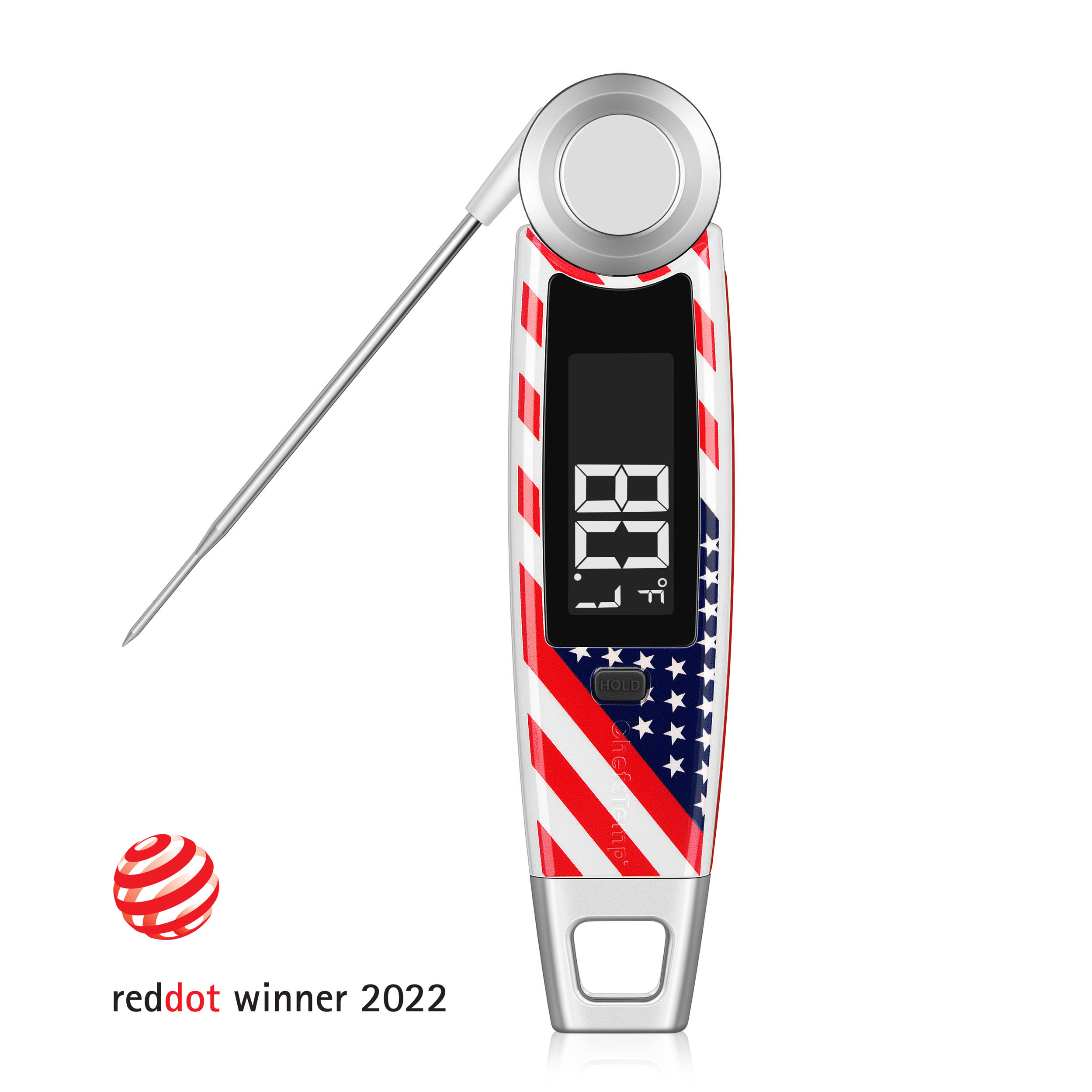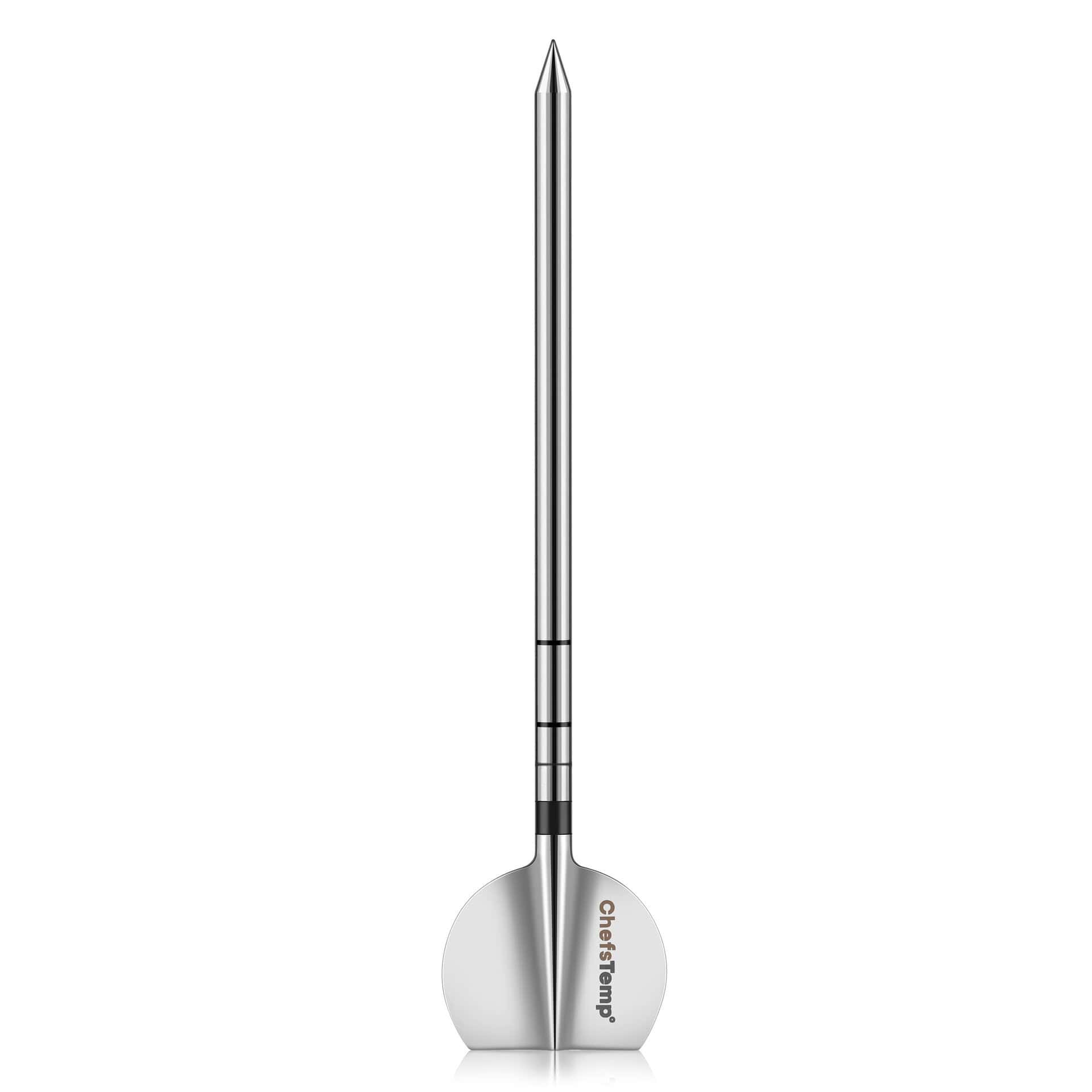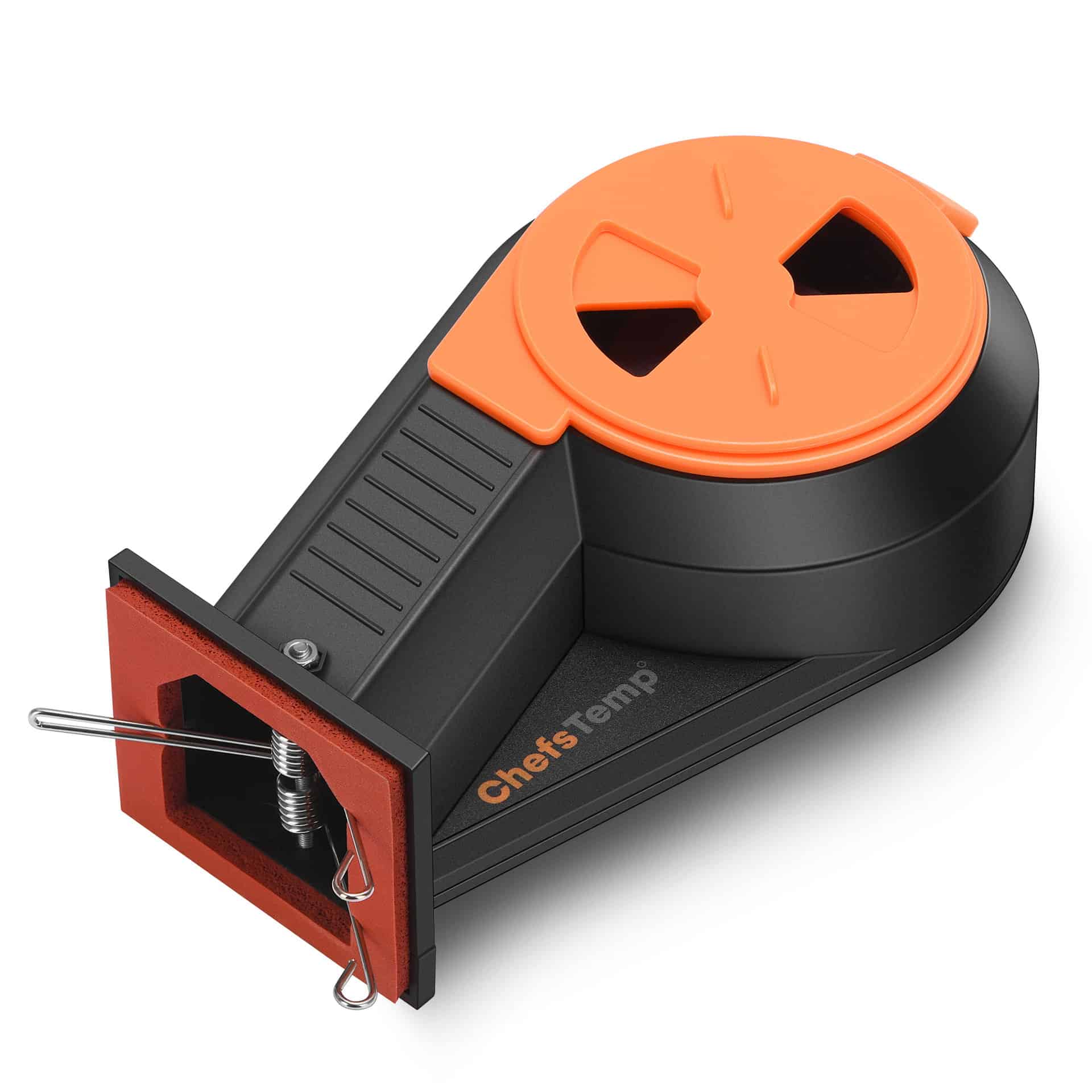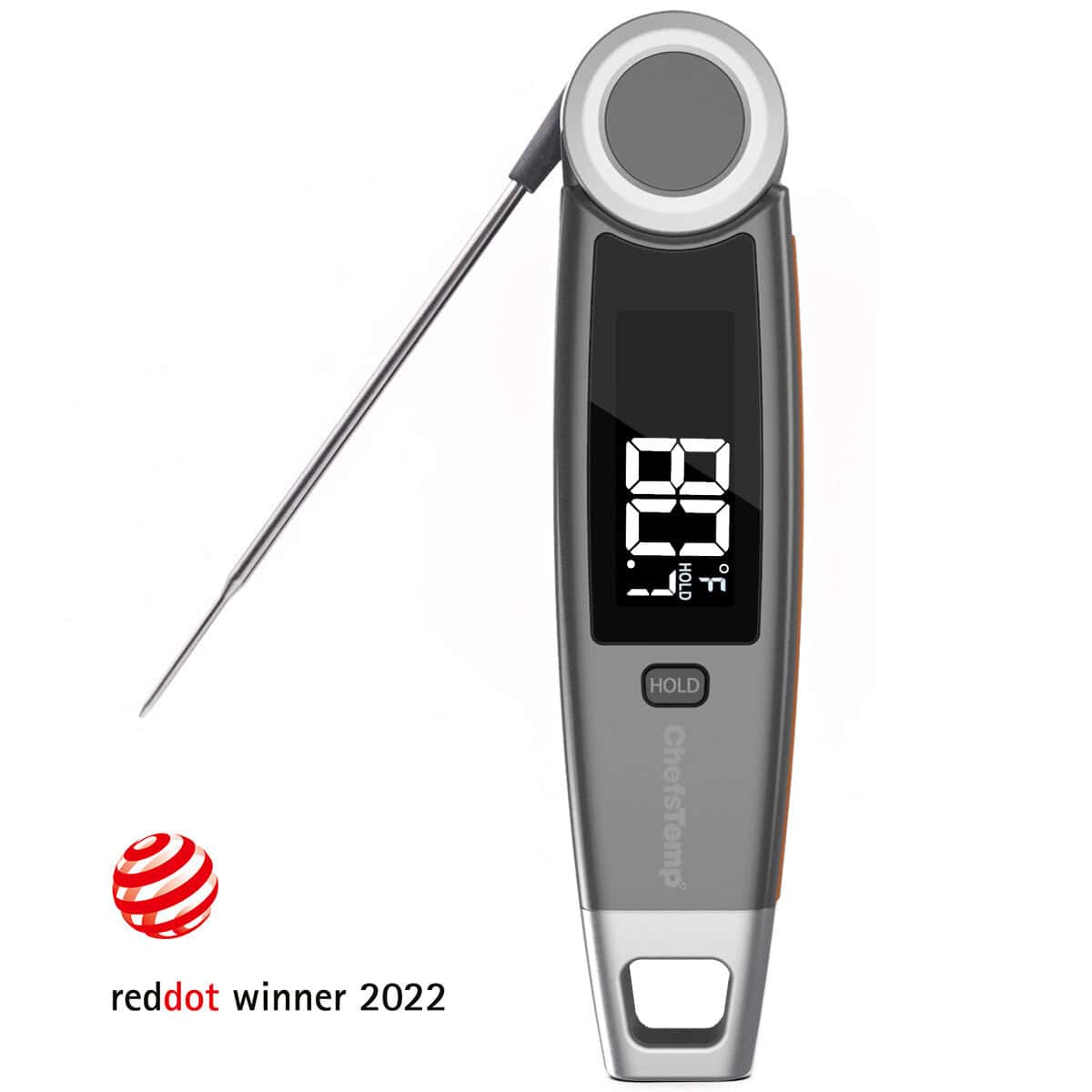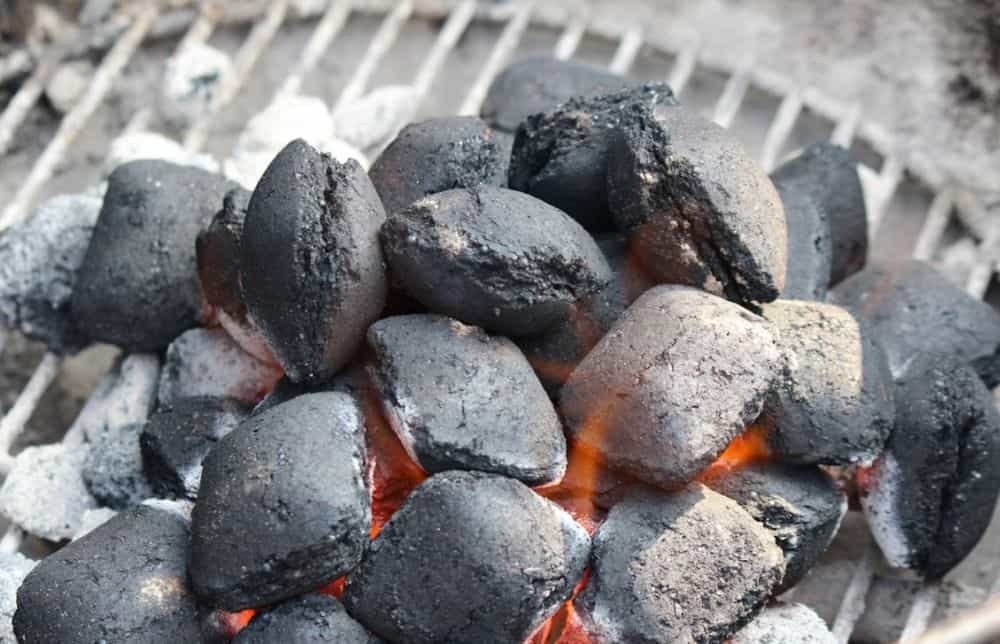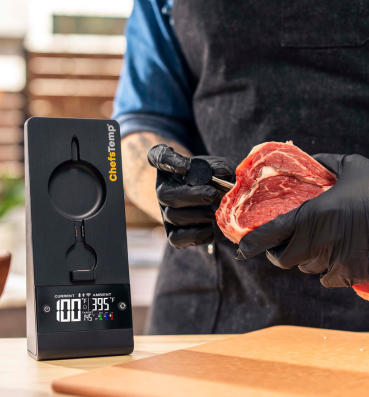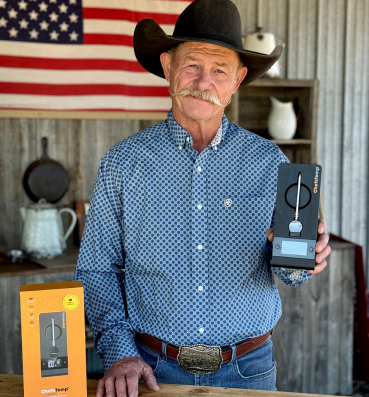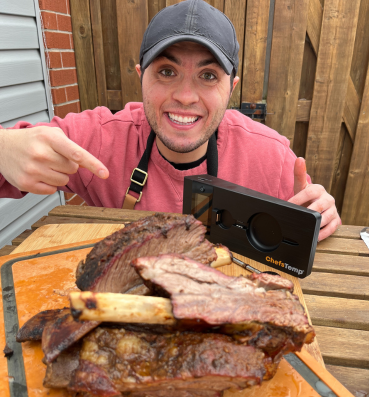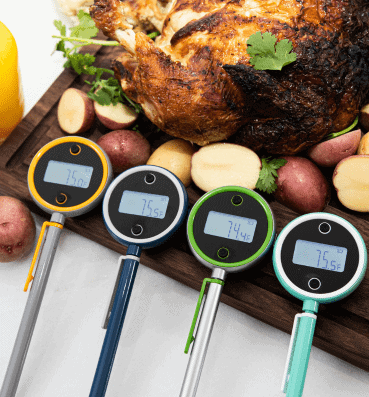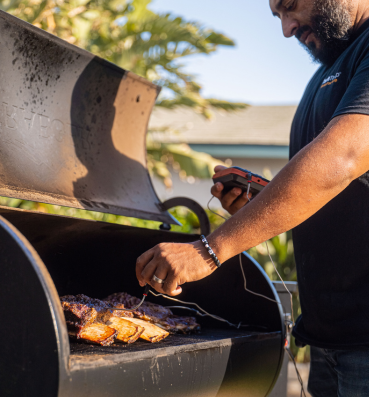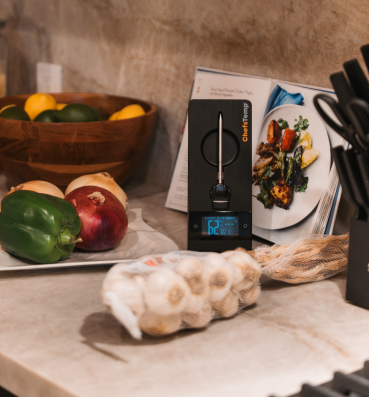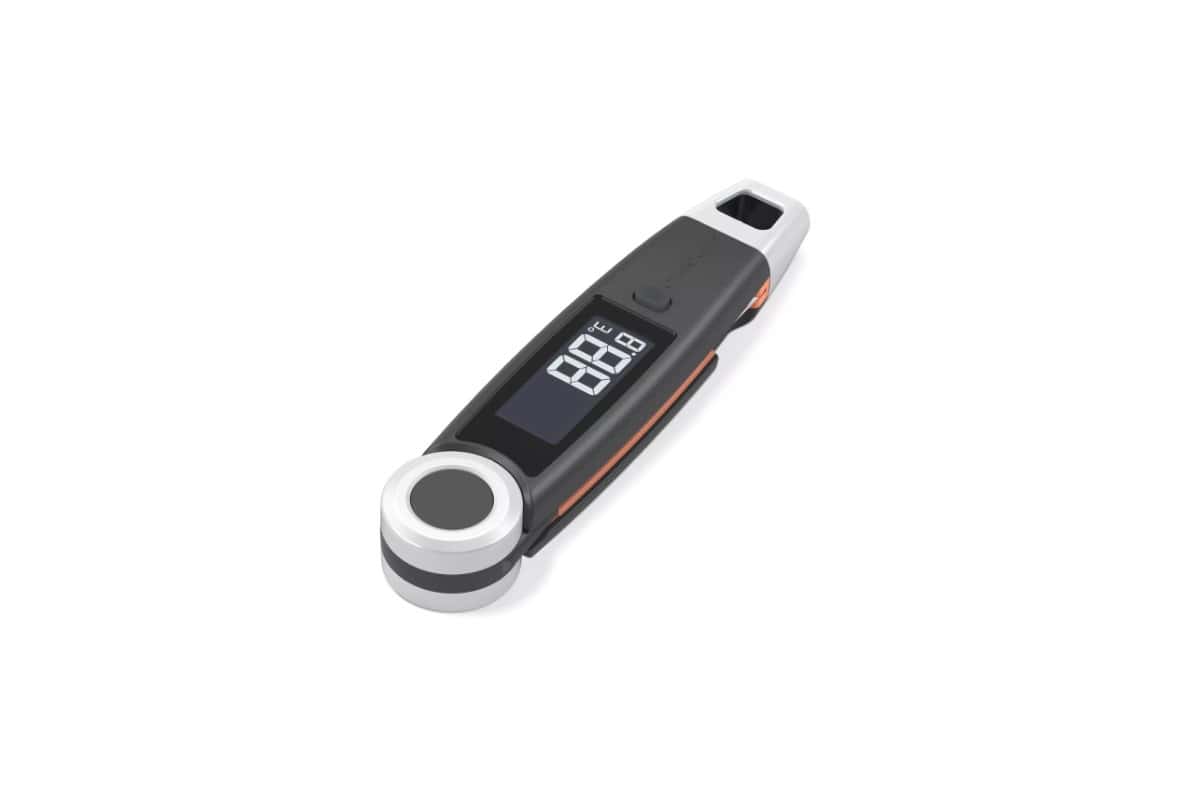
An Overview of Different Types of Thermometers
Are you looking for the best and most reliable thermometer for your kitchen? This guide will explain the different types of thermometers available and the features of each type.
Table of Contents
Types of Thermometers & Their Uses
Table of Contents
Before buying a thermometer for cooking, you must know your options. Each type of thermometer varies in suitability as a kitchen tool because some are more accurate than others, while a few have limitations.
Infrared Thermometers
An infrared thermometer is a good option for those looking for a non-contact thermometer when cooking. It is the ideal choice for checking the temperature of the food on extraordinarily high or low surface temperatures. The thermometer typically uses a laser pointer to indicate the measured object. However, there are also models without the laser pointer.
There are several benefits to using an infrared thermometer, such as the ability to measure extreme temperatures safely. It can also provide an instantaneous reading with variable settings for increased accuracy.
However, there are limitations to using an infrared thermometer. Several external factors can reduce the accuracy of the reading, such as the ambient surface temperature and the emissivity of the surface area. Some cooks prefer to use something other than an infrared thermometer because you cannot insert it into the meat to check the internal temperature. But if the internal temperature reading of the meat is not necessary, then that should not be an issue.
Probe Thermometers
A probe thermometer is one of the most commonly used thermometers for cooking. It is a good tool for checking the internal temperature of meat, liquids, and semi-solid food items. It comes with a pointed tip that you can insert into the meat or immerse it in liquid.
There are two types of probe thermometers: fixed probes and wired probes. A fixed probe thermometer features a pen-like structure; it is also easy to use and is generally cheaper. On the other hand, wired probes come with a one-meter cable and additional features, such as a folding design and alarms. The alarm is set to go off once the meat you are cooking has reached your desired internal temperature.
The ease of use is the main advantage of probe thermometers. It is also highly portable and comes with a variable measurement range. It can be calibrated to ensure the accuracy of the temperature reading.

K-Type Thermocouples
A K-type thermometers is a specialized type of thermometer. It is used in extreme temperature settings, such as laboratories and factories. Unlike the first two thermometers above used for cooking, this one is better suited to industrial settings or applications requiring exact readings.
This thermometer typically features interchangeable probes that you can plug into the device. The term ‘K-type’ refers to the probe’s metal composition. Each type of probe connected to the thermometer serves a unique purpose, such as those used for reading the temperature of the air, liquid, or other samples. Therefore, it is the best choice of thermometer if you have various intended applications and not just for cooking.
The high accuracy level of temperature reading makes it one of the best thermometers for industrial use. It also comes with varying probes, which gives more flexibility to its use. Like infrared thermometers, it has a fast-reading response time and covers various measurement ranges.
Analogue Thermometers
Analogue thermometers are another type of cheap thermometer widely available in the market. They are commonly used at home or in any application wherein traceable accuracy is unnecessary. This type of thermometer is used for measuring liquid-filled devices, but you can also find bi-metal types that use mechanical components. The thermometer features a dial or scale display.
The analogue thermometer provides temperature readings in Celsius or Fahrenheit. You can also immerse it in liquid if you need to measure an accurate reading. In addition, it requires little maintenance and offers variable measurement and resolution.
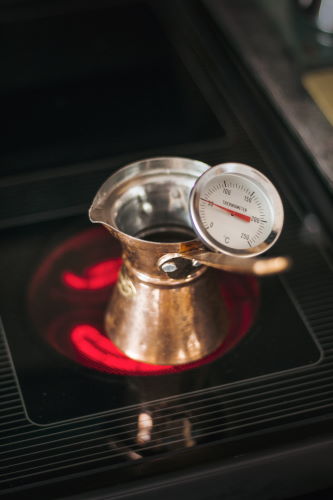
Temperature Data Loggers
A temperature data logger facilitates the recording of a continuous temperature reading. This device will automatically record the temperature reading at set intervals upon activation. The recording is automatically saved into the device’s built-in memory for future reference. You can also download the data for later viewing or monitor it in real time as the readings are displayed on-screen.
Most models of temperature data loggers are compatible with various devices, such as mobile phones or tablets. Its typical applications are in laboratories, storage rooms, transportation, or any setting wherein temperature control is critical. Users can also identify alarm limits during its use.
Which Thermometer is Limited to Measuring Surface Temperatures?
An infrared thermometer is limited to measuring surface temperatures. Therefore, you cannot rely on this tool to measure the internal temperature of meat and other food items.
Several other limitations exist with the use of an infrared thermometer, which you must know about if you rely on it in cooking. First, you must adjust its setting depending on the measured surfaces. It can also be inaccurate when various external factors come into play, such as rapid ambient temperature changes and proximity to objects that emit high energy that can interfere with the reading.
Another well-known limitation of infrared thermometers is the inability to read through liquid and glass. It’s essential to calibrate infrared thermometers frequently to ensure the accuracy of the reading.
Tips on Calibrating Thermometers
It needs to be more than just knowing the correct thermometer type for a specific application. It’s also essential to understand the need for traceable accuracy, which determines reading quality. When the accuracy of the temperature reading matters, you should invest in a tool that will give you an accurate reading. It is crucial when cooking certain types of meat or specific industrial processes.
You need to regularly calibrate your thermometer to ensure the accuracy of temperature readings. It is an integral part of the maintenance process so you can achieve consistent readings over time, especially when measuring surface temperatures, because many factors can affect the credibility of the readings.
Discover Other ChefsTemp Products
Discover more recipes and learn kitchen tricks by joining our cooking family on Facebook.
You may also like:
